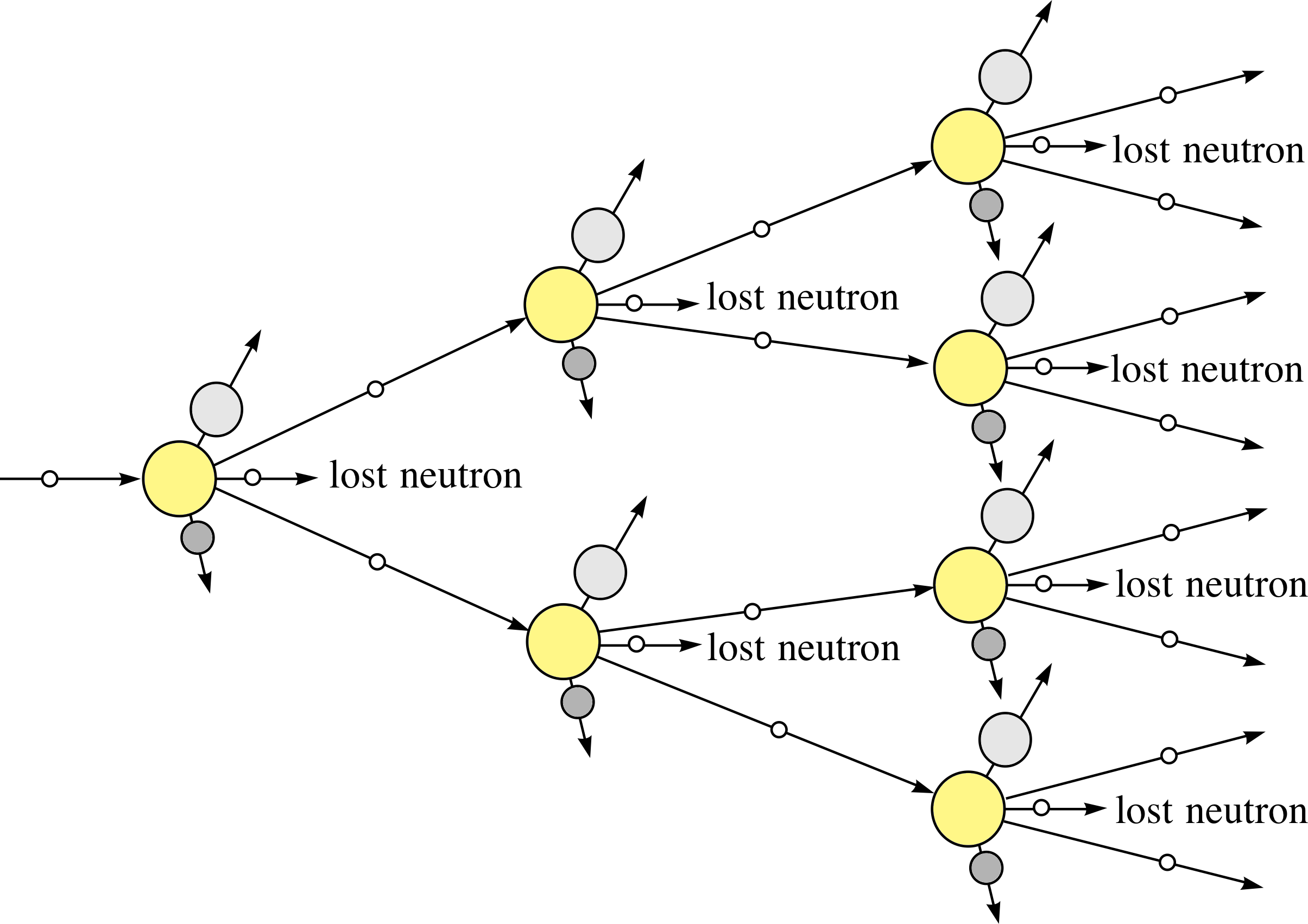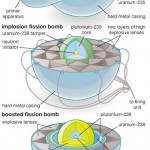
Three types of moderators are used at the MIT reactor: (1) ordinary or "light" water that is also used to cool the reactor core, (2) deuterated or heavy water (D 20), and (3) high-purity graphite, both of which are excellent at slowing neutrons without absorbing them. Since U-235 nuclei do not readily absorb the high energy neutrons that are emitted during fission, it is necessary to slow the neutrons down with a "moderator". In the MIT reactor, one other group of components is essential to the maintaining and controlling a chain reaction. As fewer and fewer neutrons are absorbed, more and more neutrons are available to cause the splitting of uranium nuclei, until finally enough neutrons are available to sustain a chain reaction. Due to its inertia it delays the thermal expansion of the fissioning fuel mass. It is used in nuclear weapon design to reduce the critical mass of a nuclear weapon and to delay the expansion of the reacting material through its inertia. To put the reactor into operation, the control blades are raised very slowly. Tamper (nuclear weapon) A tamper is an optional layer of dense material surrounding the fissile material. When the control blades are fully inserted, they absorb so many neutrons from the uranium that there are not enough to allow a chain reaction to continue. The discoveries that lead to an understanding of nuclear radiation and nuclear fission that culminated in a race to build the atomic bomb. Boron has the property of absorbing neutrons without re-emitting any. The rate of fissions in the uranium nuclei in the MIT reactor is controlled chiefly by six control blades of boron-stainless steel which are inserted vertically alongside the fuel elements. When it is in operation, the central active core contains a huge number of neutrons traveling in every direction at very high speeds. The MIT Research Reactor is used primarily for the production of neutrons. Hence, the possibility exists for creating a chain reaction. Each time a U-235 nucleus splits, it releases two or three neutrons. This process is known as fission (see diagram below).

When a U-235 nucleus absorbs an extra neutron, it quickly breaks into two parts. The arrangement of particles within uranium-235 is somewhat unstable and the nucleus can disintegrate if it is excited by an outside source.

In addition to this formation of lighter atoms, on average between 2. Comparisons of Monte Carlo results with experimental and analytical dosimetry data available in the literature are also presented.In the nucleus of each atom of uranium-235 (U-235) are 92 protons and 143 neutrons, for a total of 235. Nuclear weapon - Fission, Fusion, Yield: When bombarded by neutrons, certain isotopes of uranium and plutonium (and some other heavier elements) will split into atoms of lighter elements, a process known as nuclear fission. This investigation was performed by using californium. The capability of this material for absorbing thermal neutrons of different intensities followed by a detonation of nuclear weapon has been investigated.

Results are displayed in the form of "along and away" tables and dose profiles in a water phantom. A new composite of silicone rubber and boric acid was developed to be used as a personal wearing for protection from nuclear radiation. Interstitial and intracavity $$ sources both with and without the quantitative increase in tumor dose possible with the addition of 10 B.


 0 kommentar(er)
0 kommentar(er)
